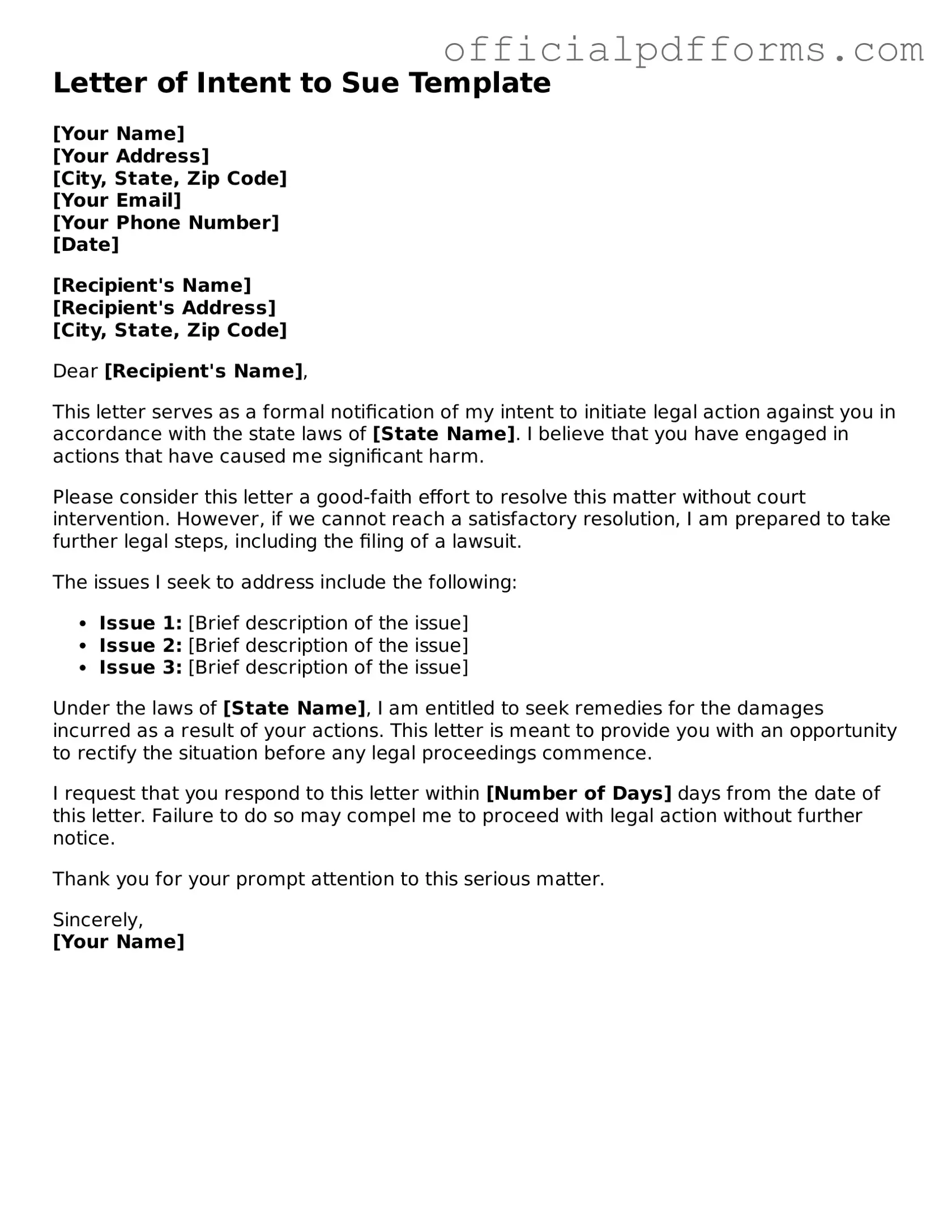What is a Letter of Intent to Sue?
A Letter of Intent to Sue is a formal document that notifies another party of your intention to take legal action against them. This letter typically outlines the reasons for the potential lawsuit and provides the recipient with an opportunity to address the issues before legal proceedings begin. It serves as a way to resolve disputes without going to court, potentially saving both parties time and money.
When should I send a Letter of Intent to Sue?
Consider sending a Letter of Intent to Sue when you have attempted to resolve a dispute through other means, such as direct communication or negotiation, but have not achieved a satisfactory outcome. This letter is often used in situations involving contract disputes, personal injury claims, or property damage. It is advisable to send this letter before initiating formal legal action, as it can demonstrate your willingness to resolve the issue amicably.
What should be included in a Letter of Intent to Sue?
Your Letter of Intent to Sue should include several key components:
-
Your contact information:
Include your name, address, and phone number.
-
The recipient's contact information:
Clearly state the name and address of the individual or entity you are addressing.
-
A clear statement of intent:
Explicitly mention that you intend to sue if the issue is not resolved.
-
Description of the issue:
Provide a detailed account of the events leading to your decision, including dates and specific incidents.
-
Desired resolution:
State what you hope to achieve, whether it’s compensation, action, or another form of resolution.
-
Deadline for response:
Set a reasonable timeframe for the recipient to respond to your letter.
How should I deliver the Letter of Intent to Sue?
Delivery of the Letter of Intent to Sue is crucial. You can choose to send it via certified mail, which provides proof of delivery. Alternatively, you might consider using a courier service that requires a signature upon receipt. It is also wise to keep a copy of the letter for your records. If possible, follow up with a phone call to ensure the recipient received the letter and understands its contents.
What happens after I send the Letter of Intent to Sue?
After sending the letter, you should wait for the recipient to respond within the timeframe you specified. They may choose to address your concerns, negotiate a settlement, or ignore the letter. If the issues remain unresolved, you may proceed with filing a lawsuit. Keep in mind that the response you receive can influence your next steps, so consider consulting with a legal professional to discuss your options moving forward.
